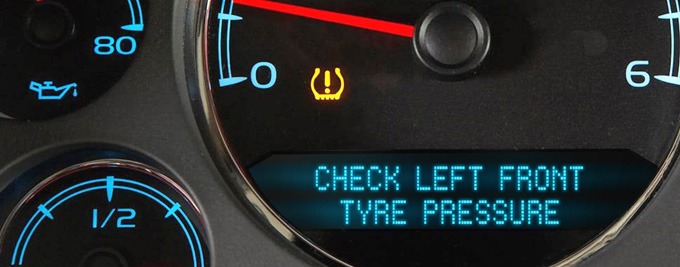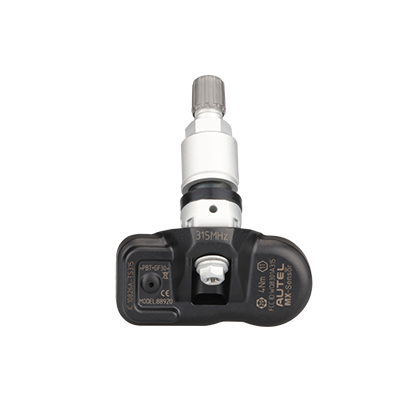Copyright © 2025, JOHN RID AUTOMOTIVE. All Rights Reserved.
TPMS Valves ( Tyre Pressure Monitoring System )

Have you ever had an alert appear on your vehicle’s dashboard that tells
you that your tyre pressure is low?
If you’ve experienced this, then your vehicle will be fitted with TPMS.
These systems are very useful and can be found in all vehicles that have a
manufacturing date of 2014 and later.
What is TPMS
Tyre Pressure Monitoring Systems (shortened to TPMS) are fitted to modern vehicles to
monitor tyre pressures and report low pressures or tyre pressure imbalances on a vehicle.
Within the TPMS is a sensor that is able to show a warning light when there is
a drop in pressure of between 6-7 PSI. This is now a legal requirement, though
some manufacturers set their warning lights to come on when sensors detect
much smaller decreases for additional peace of mind.
These devices can be used to determine whether your tyre is frequently leaking air, either
through the trim or because of a slow puncture. Solving this problem quickly could reduce
the chances of an accident occurring due to a blowout or a flat tyre.
We can supply, program and fit replacement TPMS valves, as well as making a clone of
your old valves if you can supply us with the original.

When the pressure drops past a set parameter – usually 25% – a warning alert will appear
on your dashboard. At this point, the car should be taken to a petrol station to have its
tyres pumped up. Some TPMSs will specify which tyre is low so you don’t have to
manually check them all.
These sensors are fitted with an internal battery, however, battery failure is the main
reason TPMSs stop working. The more miles you do, the quicker the sensor will run
down. Unfortunately, for them to work properly, they need to be sealed units – so you
can’t simply replace the battery when it runs out.
Direct TPMS is the most common as they’re more
reliable. This system uses pressure sensors that are
located within the tyre to track the pressure. Because of
their location, they can track the exact pressure within the
tyre, making them accurate and reliable.
TPMS Electronic sensing Valve
According to the charity Tyre Safe, 1,200 people are killed on Britain’s roads annually
because of incorrect tyre pressures. It is also estimated that another
5,000 deaths per annum can be attributed to incorrect tyre pressure
(though these numbers can’t be proved).
So, to keep you, your passengers, and other road users safe, maintain your TPMS.
Another reason to service your TPMS regularly is the MOT implications. That’s right,
having a faulty TPMS can cause instant MOT failure !




TPMS Valves
( Tyre Pressure Monitoring System )

Have you ever had an alert appear on your vehicle’s
dashboard that tells you that your tyre pressure is low?
If you’ve experienced this, then your vehicle will be
fitted with TPMS. These systems are very useful and
can be found in all vehicles that have a
manufacturing date of 2014 and later.
What is TPMS
Tyre Pressure Monitoring Systems (shortened to TPMS)
are fitted to modern vehicles to monitor tyre pressures
and report low pressures or tyre pressure
imbalances on a vehicle.
Within the TPMS is a sensor that is able to show a
warning light when there is a drop in pressure of
between 6-7 PSI. This is now a legal requirement,
though some manufacturers set their warning
lights to come on when sensors detect much
smaller decreases for additional peace of mind.
These devices can be used to determine whether your
tyre is frequently leaking air, either through the trim or
because of a slow puncture. Solving this problem
quickly could reduce the chances of an accident
occurring due to a blowout or a flat tyre.
We can supply, program and fit replacement TPMS
valves, as well as making a clone of your old valves
if you can supply us with the original.

Direct TPMS is the most
common as they’re more reliable.
This system uses pressure
sensors that are located within
the tyre to track the pressure.
Because of their location, they
can track the exact pressure
within the tyre, making them
accurate and reliable.
TPMS Electronic sensing Valve
When the pressure drops past a set parameter – usually
25% – a warning alert will appear on your dashboard. At
this point, the car should be taken to a petrol station to
have its tyres pumped up. Some TPMSs will specify which
tyre is low so you don’t have to manually check them all.
These sensors are fitted with an internal battery, however,
battery failure is the main reason TPMSs stop working.
The more miles you do, the quicker the sensor will run
down. Unfortunately, for them to work properly, they need
to be sealed units – so you can’t simply replace the
battery when it runs out.
According to the charity Tyre Safe, 1,200 people are killed
on Britain’s roads annually because of incorrect tyre
pressures. It is also estimated that another
5,000 deaths per annum can be attributed to incorrect
tyre pressure (though these numbers can’t be proved).
So, to keep you, your passengers, and other road users
safe, maintain your TPMS. Another reason to service your
TPMS regularly is the MOT implications. That’s right,
having a faulty TPMS can cause instant MOT failure !
Copyright © 2025, JOHN RID AUTOMOTIVE. All Rights Reserved.
















